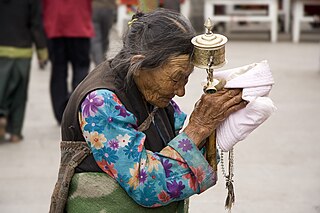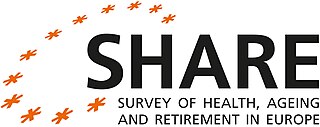 W
WGerontology is the study of the social, cultural, psychological, cognitive, and biological aspects of aging. The word was coined by Ilya Ilyich Mechnikov in 1903, from the Greek γέρων, geron, "old man" and -λογία, -logia, "study of". The field is distinguished from geriatrics, which is the branch of medicine that specializes in the treatment of existing disease in older adults. Gerontologists include researchers and practitioners in the fields of biology, nursing, medicine, criminology, dentistry, social work, physical and occupational therapy, psychology, psychiatry, sociology, economics, political science, architecture, geography, pharmacy, public health, housing, and anthropology.
 W
WThe activity theory, also known as the implicit theory of aging, normal theory of aging, and lay theory of aging, proposes that successful ageing occurs when older adults stay active and maintain social interactions. It takes the view that the aging process is delayed and the quality of life is enhanced when old people remain socially active. The activity theory rose in opposing response to the disengagement theory. The activity theory and the disengagement theory were the two major theories that outlined successful aging in the early 1960s. The theory was developed by Robert J. Havighurst in 1961. In 1964, Bernice Neugarten asserted that satisfaction in old age depended on active maintenance of personal relationships and endeavors.
 W
WThe Administration on Aging (AoA) is an agency within the Administration for Community Living of the United States Department of Health and Human Services. AoA works to ensure that older Americans can stay independent in their communities, mostly by awarding grants to States, Native American tribal organizations, and local communities to support programs authorized by Congress in the Older Americans Act. AoA also awards discretionary grants to research organizations working on projects that support those goals. It conducts statistical activities in support of the research, analysis, and evaluation of programs to meet the needs of an aging population.
 W
WThe continuity theory of normal aging states that older adults will usually maintain the same activities, behaviors, relationships as they did in their earlier years of life. According to this theory, older adults try to maintain this continuity of lifestyle by adapting strategies that are connected to their past experiences.
 W
WThe disengagement theory of ageing states that "aging is an inevitable, mutual withdrawal or disengagement, resulting in decreased interaction between the aging person and others in the social system he belongs to". The theory claims that it is natural and acceptable for older adults to withdraw from society. There are multiple variations on disengagement theory, such as moral disengagement.
 W
WThe frailty index (FI) is used to measure the health status of older individuals; it serves as a proxy measure of aging and vulnerability to poor outcomes.
 W
WFrailty is a common geriatric syndrome that embodies an elevated risk of catastrophic declines in health and function among older adults. Frailty is a condition associated with ageing, and it has been recognized for centuries. It is also a marker of a more widespread syndrome of frailty, with associated weakness, slowing, decreased energy, lower activity, and, when severe, unintended weight loss. Frailty has been identified as a risk factor for the development of dementia.
 W
WThe grandmother hypothesis is a hypothesis to explain the existence of menopause in human life history by identifying the adaptive value of extended kin networking. It builds on the previously postulated "mother hypothesis" which states that as mothers age, the costs of reproducing become greater, and energy devoted to those activities would be better spent helping her offspring in their reproductive efforts. It suggests that by redirecting their energy onto those of their offspring, grandmothers can better ensure the survival of their genes through younger generations. By providing sustenance and support to their kin, grandmothers not only ensure that their genetic interests are met, but they also enhance their social networks which could translate into better immediate resource acquisition. This effect could extend past kin into larger community networks and benefit wider group fitness.
 W
WThe Hunza diet consists of a series of selective food and drink intake practiced by the Hunza people of northern Pakistan that is argued by some to be unique and have long lasting effects. The diet mostly consists of raw food including nuts, fresh vegetables, dry vegetables, mint, fruits and seeds added with yogurt. The cooked meal, daal included with chappati, is included for dinner. It has also been advocated for being inexpensive and mostly self-producible. The Hunza lifestyle was referenced in the Biorhythm Calendar published by the American Health Institute in the later 1970s.
 W
WMortality displacement is a phenomenon where a period of excess deaths is followed by a period of mortality deficit. It is also known as "harvesting". It is usually attributable to environmental phenomena such as heat waves, cold spells, epidemics and pandemics, especially influenza pandemics, famine or war.
 W
WThe Okinawa diet describes the eating habits of the indigenous people of the Ryukyu Islands, which is believed to contribute to their exceptional longevity. It is also the name of a weight-loss diet based on this.
 W
WOld age refers to ages nearing or surpassing the life expectancy of human beings, and is thus the end of the human life cycle. Terms and euphemisms include old people, the elderly, OAPs, seniors, senior citizens, older adults, and the elders.
 W
WPregnancy over the age of 50 has, over recent years, become possible for more women, and more easily achieved for many, due to recent advances in assisted reproductive technology, in particular egg donation. Typically, a woman's fecundity ends with menopause, which, by definition, is 12 consecutive months without having had any menstrual flow at all. During perimenopause, the menstrual cycle and the periods become irregular and eventually stop altogether, but even when periods are still regular, the egg quality of women in their forties is lower than in younger women, making the likelihood of conceiving a healthy baby also reduced, particularly after age 42. The female biological clock can vary greatly from woman to woman. A woman's individual level of fertility can be tested through a variety of methods.
 W
WThe Second Forty Years is a 1946 nonfiction self-help book about aging, by Edward Stieglitz.
 W
WThe Survey of Health, Ageing and Retirement in Europe (SHARE) is a multidisciplinary and cross-national panel database of micro data on health, socio-economic status and social and family networks. In seven survey waves to date, SHARE has conducted approximately 380,000 interviews with about 140,000 individuals aged 50 and over. The survey covers 27 European countries and Israel.
 W
W